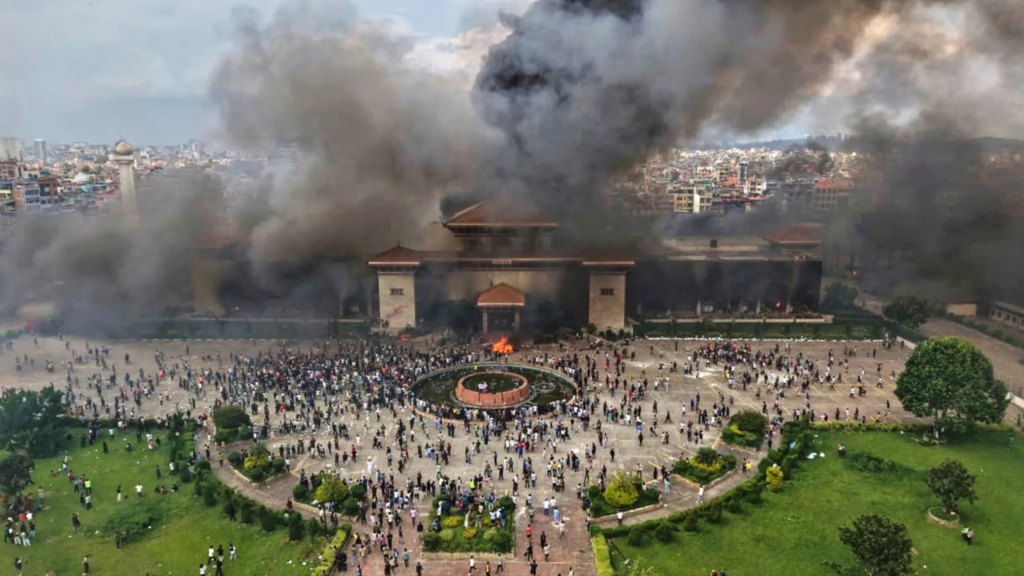ASEAN’s Uphill Struggle Against Inaction
How the Association of Southeast Asian Nations’ inertia in the face of geopolitical instability continues to undermine its effectiveness
The 46th Summit of the Association of Southeast Asian Nations (ASEAN) takes place in Kuala Lumpur, Malaysia in May later this year with the regional organisation, which includes a diverse array of states and is built upon the principles of consensus and non-interference, facing continued questions regarding its effectiveness and functionality.
At a time when the ongoing conflict in Myanmar, rising tensions in the South China Sea and US-China global competition pose significant challenges to Southeast Asian states, ASEAN’s critics argue the organisation remains paralysed with member states unable to agree on a collective approach and instead narrowly pursuing their own disparate national interests.
With the organisation’s current chair Malaysia charged with overseeing the adoption of the ASEAN Community Vision 2045, the association’s twenty-year strategic roadmap, as well as Timor-Leste’s upcoming ascension to full membership status, whether ASEAN will be able to address the inaction that has undermined its effectiveness and international reputation remains to be seen.
What is ASEAN?
The association was originally formed in 1967 with Indonesia, Malaysia, the Philippines, Singapore and Thailand as its founding members with the countries striving to establish a united front against communism. As the global and regional geopolitical landscape shifted in the 1990s with the collapse of the Soviet Union, the signing of the Paris Peace Agreements in 1991 that formally ended the Cambodian-Vietnamese War and the normalisation of US-Vietnamese relations in 1995, ASEAN underwent further change (Roberts, 2010).
By the end of the decade, the association’s membership had doubled with Brunei, Vietnam, Laos, Myanmar and Cambodia all joining whilst the organisation also became an UN dialogue partner in 2006. This expansion of the organisation, with Timor Leste additionally on track to join in the near future, has brought together a highly diverse grouping of states, each with their own demographics, systems of government, domestic priorities and foreign policies with a combined population of almost 680 million and an estimated aggregate GDP of nearly US$4 trillion as of 2024 (Hong et al, 2025).
In 2007 all ten member states agreed to adopt the ASEAN Charter which established a legal framework and the institutional structure of the regional organisation which built upon the principles of ‘consensus’ and ‘non-interference’ that were enshrined in the 1976 Treaty of Amity and Cooperation in Southeast Asia between the five founding states (Renshaw, 2013).
These core concepts are central to ‘The ASEAN Way’, which in general terms characterises the way that the organisation and its members have typically operated with ‘compromise’ and ‘mutual respect’ prioritised over confrontation and conflict (Cuyvers, 2019). This focus on cooperation and coordination is also reflected in the appointment of countries as chair of ASEAN which rotates on an annual basis in alphabetical order of the member state’s English names which is supported by a secretariat based in the capital of Indonesia, Jakarta.
Success and Failures
This consensus-building approach has helped to foster greater economic cooperation between the member states as seen through the establishment of the ASEAN Free Trade Area in 1992, the ASEAN Regional Forum in 1994, the ASEAN Plus Three cooperation process in 1997 and the annual ASEAN Defence Ministers’ Meeting Plus initiative in 2010 (Bernhardt et al, 2017).
Whilst recent years have also seen the addition of ASEAN members to the Regional Comprehensive Economic Partnership in 2020 as well as the beginning of ASEAN DEFA (Digital Economy Framework Agreement) negotiations in 2023 with the aspiration of adding $2 trillion to ASEAN’s collective digital economy by 2030, the organisation has faced substantial challenges (Hsien-Li et al, 2025).
Unlike the bloc’s progress in pursuing mutually beneficial economic growth initiatives, ASEAN’s approach to addressing regional political and military dilemmas has been far less coherent and effective (Davies, 2012). This is most evident in the failure of the organisation’s Five-Point Consensus (5PC) as a diplomatic solution to the 2021 military coup and ongoing civil war in Myanmar with the association still unable to take substantive action which has led to growing criticism of ASEAN from international observers (Kurlantizck, 2022).
Even figures inside ASEAN like the co-chair of the organisation’s Parliamentarians for Human Rights group, Charles Santiago, have condemned the association’s seemingly passive response to the conflict; openly question the bloc’s ‘relevance’ if it “cannot come together to resolve the most crucial and pressing issue in the region” (Chau, 2023).
This inaction is largely a result of the fundamental structure and mechanisms of ASEAN, the diversity of its member states and their interests as well as the association’s focus upon constructing a consensus approach (Pongsudhirak, 2018). Indeed, criticism of ASEAN’s functionality is not new and has in fact been a subject of debate for international observers and academics for decades.
Back in 2005, Mya Than argued that the political structure of ASEAN may be at fault for its ineffectiveness, contending that the association’s insistence on consensus and collective action prevented the organisation from embarking on any significant action given the vastly different political, economic and historical experiences of its member states (Than, 2005). Building on this, Chris Alden has contended that the conflicting interests of member nations as well as the prioritisation of ASEAN’s perceived ‘legitimacy’ over practical results continues to undermine the organisation’s capacity to achieve practical outcomes (Alden, 2010).
Looking Ahead
Whether a refocusing of political objectives or a fundamental overhaul of the association’s non-interference approach is required to rejuvenate ASEAN remains to be seen with some arguing that a closer alliance between the original five member states as well as other minilateralist initiatives would be key to jump-starting effective regional collective action.
While this debate unfolds, ASEAN continues to struggle onwards at a time when the geopolitical sands are shifting beneath its feet. With Southeast Asia a key flashpoint in the superpower rivalry between the United States and China, ASEAN’s member states will face numerous challenges in the months and years to come, challenges arguably easier to weather if part of an active, effective and dynamic regional bloc.
Bibliography
Alden, C. (2010). ‘A Pariah In Our Midst’: Regional Organisations and The Problematic Of Western Designated Pariah Regimes- The Case of SADC/Zimbabwe and ASEAN/Myanmar. LSE Development Studies Institute.
Bernhardt, T., Dickenson-Jones, G., De, S. K. (2017). New Kids on the ASEAN Block: Myanmar SMEs and Regional Economic Integration. Journal of Southeast Asian Economies, 34, no.1, 4-38.
Chau, T. (2023). ‘Severe Stress’: Myanmar, South China Sea push ASEAN to breaking point. Aljazeera. [online] 4 Sep. Available at: https://www.aljazeera.com/news/2023/9/4/severe-stress-myanmar-south-china-sea-push-asean-to-breaking-point
Cuyvers, L. (2019). The ‘ASEAN Way’ and ASEAN’s development gap with Cambodia, Laos, Myanmar and Vietnam: a critical view. Asia Pacific Business Review, 25, no.5, 683-704.
Davies, M. (2012). The Perils of Incoherence: ASEAN, Myanmar and the Avoidable Failures of Human Rights Socialization. Contemporary Southeast Asia, 34, no.1, 1-22.
Hsien-Li, T., et al (2025). Unveiling the ASEAN Digital Economy Framework Agreement (DEFA): An Overview of its Origins, Substance, and Legal Structure. Tech for Good Institute.
Hong, L., et al. (2025). What is ASEAN? Council on Foreign Relations. [online] 15 Jan. Available at: https://www.cfr.org/backgrounder/what-asean
Kurlantizck, J. (2022). ASEAN’s Complete Failure on Myanmar: A Short Overview. Council on Foreign Relations. [online] 29 Aug. Available at: https://www.cfr.org/blog/aseans-complete-failure-myanmar-short-overview
Pongsudhirak, T. (2018). Locating ASEAN in East Asia’s Regional Order. Asia Policy: National Bureau of Asian Research, 13, no.2, 52-56.
Renshaw, C. S. (2013). Democratic Transformation and Regional Institutions: The Case of Myanmar and ASEAN. Journal of Current Southeast Asian Affairs, 32, no.1, 29-54.
Roberts, C. (2010). ASEAN’s Myanmar Crisis: Challenges to the Pursuit of a Security Community. Institute of Southeast Asian Studies.
Than, M. (2005). Myanmar in ASEAN: Regional Cooperation Experience. Institute of Southeast Asian Studies.



